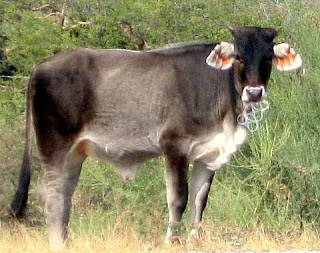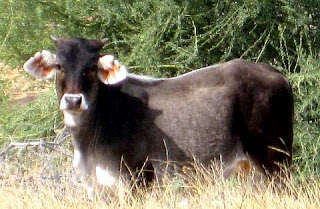
Coronary heart disease (CHD) resulting in a loss of blood flow to the heart (heart attack), was first described in detail in 1912 by Dr. James B. Herrick. Sudden cardiac death due to CHD was considered rare in the 19th century, although other forms of heart disease were diagnosed regularly by symptoms and autopsies. They remain rare in many non-industrial cultures today. This could not have resulted from massive underdiagnosis because heart attacks have characteristic symptoms, such as chest pain that extends along the arm or neck. Physicians up to that time were regularly diagnosing heart conditions other than CHD. The following graph is of total heart disease mortality in the U.S. from 1900 to 2005. It represents all types of heart disease mortality, including 'heart failure', which are non-CHD disorders like arrhythmia and myocarditis.
 The graph above is not age-adjusted, meaning it doesn't reflect the fact that lifespan has increased since 1900. I couldn't compile the raw data myself without a lot of effort, but the age-adjusted graph is here. It looks similar to the one above, just a bit less pronounced. I think it's interesting to note the close similarity between the graph of margarine intake and the graph of heart disease deaths. The butter intake graph is also essentially the inverse of the heart disease graph.
The graph above is not age-adjusted, meaning it doesn't reflect the fact that lifespan has increased since 1900. I couldn't compile the raw data myself without a lot of effort, but the age-adjusted graph is here. It looks similar to the one above, just a bit less pronounced. I think it's interesting to note the close similarity between the graph of margarine intake and the graph of heart disease deaths. The butter intake graph is also essentially the inverse of the heart disease graph.Here's where it gets really interesting. The U.S. Centers for Disease Control has also been tracking CHD deaths specifically since 1900. Again, it would be a lot of work for me to compile the raw data, but it can be found here and a graph is in Anthony Colpo's book The Great Cholesterol Con. Here's the jist of it: there was essentially no CHD mortality until 1925, at which point it skyrocketed until about 1970, becoming the leading cause of death. After that, it began to fall due to improved medical care. There are some discontinuities in the data due to changes in diagnostic criteria, but even subtracting those, the pattern is crystal clear.
The age-adjusted heart disease death rate (all forms of heart disease) has been falling since the 1950s, largely due to improved medical treatment. Heart disease incidence has not declined substantially, according to the Framingham Heart study. We're better at keeping people alive in the 21st century, but we haven't successfully addressed the root cause of heart disease.
Was the shift from butter to margarine involved in the CHD epidemic? We can't make any firm conclusions from these data, because they're purely correlations. But there are nevertheless mechanisms that support a protective role for butter, and a detrimental one for margarine. Butter from pastured cows is one of the richest known sources of vitamin K2. Vitamin K2 plays a central role in protecting against arterial calcification, which is an integral part of arterial plaque and the best single predictor of cardiovascular death risk. In the early 20th century, butter was typically from pastured cows.
Margarine is a major source of trans fat. Trans fat is typically found in vegetable oil that has been hydrogenated, rendering it solid at room temperature. Hydrogenation is a chemical reaction that is truly disgusting. It involves heat, oil, hydrogen gas and a metal catalyst. I hope you give a wide berth to any food that says "hydrogenated" anywhere in the ingredients. Some modern margarine is supposedly free of trans fats, but in the U.S., less than 0.5 grams per serving can be rounded down so the nutrition label is not a reliable guide. Only by looking at the ingredients can you be sure that the oils haven't been hydrogenated. Even if they aren't, I still don't recommend margarine, which is an industrially processed pseudo-food.
One of the strongest explanations of CHD is the oxidized LDL hypothesis. The idea is that LDL lipoprotein particles ("LDL cholesterol") become oxidized and stick to the vessel walls, creating an inflammatory cascade that results in plaque formation. Chris Masterjohn wrote a nice explanation of the theory here. Several things influence the amount of oxidized LDL in the blood, including the total amount of LDL in the blood, the antioxidant content of the particle, the polyunsaturated fat content of LDL (more PUFA = more oxidation), and the size of the LDL particles. Small LDL is considered more easily oxidized than large LDL. Small LDL is also associated with elevated CHD mortality. Trans fat shrinks your LDL compared to butter.
In my opinion, it's likely that both the decrease in butter consumption and the increase in trans fat consumption contributed to the massive incidence of CHD seen in the U.S. and other industrial nations today. I think it's worth noting that France has the highest per-capita dairy fat consumption of any industrial nation, along with a comparatively low intake of hydrogenated fat, and also has the second-lowest rate of CHD, behind Japan.















































